- Home
- Alex Berenson
The Prince of Beers (Kindle Single)
The Prince of Beers (Kindle Single) Read online
THE PRINCE OF BEERS
by Alex Berenson
Sunday, Dec. 19, 2010. Just past noon.
The man with a thousand toys opened his eyes, came to his feet. He padded through the golden wreckage of his bedroom, a mess of flat-screen televisions, boxes of ammunition, pistols and rifles of every imaginable make and caliber, stereo speakers, flashlights, dozens of bottles of Gatorade. Like a survivalist cult had taken over the Playboy Mansion. A few feet away, a loaded shotgun was propped beside his toilet. A Glock pistol hung ready on a hook above it.
Ready for what? The man with a thousand toys lived behind walls and fences, with dogs and cameras watching his mansion inside and out. Once, the security might have been necessary. Once he'd been the heir of a dynasty that had lasted five generations, the rightful ruler of one of the world's most famous companies.
But hardly anyone cared about him now, even in this place that had respected and feared his father, adored his grandfather. And the company wasn't his to run anymore.
His father had made sure of that. His father. The Chief.
The weapons were a tradition too. His family believed in guns and had the accidental shootings to prove their love. He owned more than a thousand, from single-shot pistols to .50-caliber sniper rifles. Beside his mansion he'd built a second house to hold them all.
The man with a thousand toys escaped his bedroom. In the kitchen he mixed drinks, one for him, one for her. Nothing fun. Chocolate protein shakes. He was forty-six now. Staying in shape wasn't as easy as it had been. He was even stuck with a prescription for Crestor now, cholesterol medicine, the balm of middle age. But he tried. Despite his reputation for partying, he'd always worked out, always been careful with his body and his looks. He was handsome, about five-feet-ten, with the blow-dried hair and strong chin and easy smile of a soap opera star. His caterpillar eyebrows and jug-handle ears were his most obvious flaws, but they hardly dented his appeal.
He gathered the shakes, carried them back to the bedroom. Barely four hours of sunlight left. They'd better get up. Mike was around, somewhere.
"Adrienne?"
She lay on the bed, her left arm twisted under her body, unmoving. She still wore her clothes from the night before. She hadn't been sleeping the last few days, been sick. Maybe the insomnia had caught up to her.
"Adrienne?" Louder this time.
Still she didn't move. He put a hand to her cheek, felt her skin cool and clammy. He leaned over, shook her, looked for life, for breath. Found none.
"Adrienne?" Not again. Not another dead girl.
But yes, again, another dead girl.
Where was Mike? He needed Mike. They had to call 911. At least the cops and the paramedics knew the way. They'd become regulars at this haunted house.
* * *
This may sound like a murder mystery. But in truth it's a portrait of power grown soft and louche; it recounts the history of a man given opportunities most of us can hardly imagine, borne of wealth and position to the St. Louis family empire that controlled Anheuser-Busch — a beloved and powerful American institution in an industry that holds unique sway over American life. Yet he was always hobbled, for he was not given, and never had the strength to take, the most important chance of all: the chance to live his life as he saw fit, make his own mistakes, face the consequences of his actions — the way the rest of us, without privilege or position, live our lives every day.
In the end, the fall of August Busch IV shows what tragedies can transpire between the hardest of fathers and the softest of sons — and reveals what mistakes can befall a forty-eight-year-old who has never fully rounded into adulthood; a drinker who over the years bought ten thousand rounds for strangers but can no longer identify his friends; a sloppy good-times hedonist who offers the only link between two untimely deaths, more than a quarter-century apart. It also serves as a reminder that expectations can be curses, that justice comes in many guises, and that loneliness and depression can shrink a mansion until it can feel like a prison cell — though just the sort of spacious, comfortable prison cell that befits a rich, troubled heir to a legendary American fortune.
* * *
Wednesday, Aug. 1, 2012. 7 p.m.
I stepped out of my aged Dodge minivan and found myself in an open-air furnace masquerading as downtown St. Louis. 101 degrees. Another three-digit day in a scorching Midwestern summer. I'd driven here from New York, burning gas at four bucks a gallon, doing my part for global warming. Driven when I could have flown and I couldn't quite explain why, not even to myself. I'd wanted to rumble through Pennsylvania and Ohio in the midst of another sullen American July, the fifth straight summer of our discontent, even the movies taken away by a dull-eyed, orange-haired psychopath.
I didn't see much, though. I rolled down the awful Pennsylvania Turnpike after dark and then chased a hotel room on I-70 until I hit Columbus at 4 a.m. Show Us The Real Birth Certificate, a billboard in PA urged, but aside from that cri de droite, I didn't see many Obama or Romney bumper stickers, didn't detect much interest in what either side was selling.
Maybe folks were just too hot to care. The next afternoon, as Ohio turned into Indiana into Illinois, the air dried out and the corn stalks shrank. I started to understand why I'd been reading about a modern Dust Bowl. In southern Illinois the streams were mudholes. I pulled off the highway at a barbeque joint a hundred miles east of St. Louis and heard from the high schoolers behind the counter that they hadn't seen rain since early March. March, I said, stupidly. Five months without rain seemed impossible. Yep, March. I shut up and ate my barbeque and got back on the road.
The Mississippi was still flowing, though, still a mile wide. The Mississippi's a magnificent river, the second-longest in the world, the freshwater link between the Midwest and the Gulf of Mexico. The Mississippi is home to Huck and Tom, the birthplace of the blues. In theory, anyway. In reality the Mississippi looks like a pot of refried beans that should come with a side of hepatitis vaccine. Ocean liners cruise the Hudson. The Mississippi's ship traffic runs more to grain barges. Its bridges are equally dull, jumbles of steel, Erector sets thrown together by a particularly lazy kid. On the plus side, they probably don't encourage jumpers the way that the George Washington or the Golden Gate do. Who wants to spend eternity being nibbled by Asian carp?
I cruised off the Martin Luther King Jr. Bridge, parked, trudged toward my hotel. Have I mentioned the heat? I found myself surrounded by cheery-looking white people dressed in red: red shorts, T-shirts, caps, pants, socks. Red underwear for all I knew. They walked south, moving about as fast as the river. Aha! The Cardinals must be in town. After I check in, I'll head over to Busch stadium — the name of yet another reflection of family's impact on St. Louis. I hadn't been a New York Times reporter all those years for nothing.
I'd come to St. Louis to investigate the death of Adrienne Nicole Martin, a 27-year-old ex-waitress, wannabe model, and all-around good-time girl. In December 2010, Adrienne was found dead at the mansion of her boyfriend, August Busch IV, the former chief executive of Anheuser-Busch — called The Fourth, to distinguish him from his dad, The Third. Adrienne had left an eight-year-old son behind.
In truth, I knew I wouldn't be solving a crime. Toxicology reports showed that Adrienne had died of an overdose of oxycodone, a powerful prescription opiate that kills thousands of Americans every year. After a short investigation, local police and the St. Louis County prosecutor's office had concluded that Adrienne's overdose was accidental. The prosecutor declined to charge Busch IV, or anyone else, in the death. Despite mutters locally about Busches buying justice, no one had offered evidence to contradict the theory of accidental death.
Still, the
story of the fallen heir and the dead waitress fascinated me. Of all the giant companies begun in the 19th century — Standard Oil, Coca-Cola, Carnegie Steel — I could think of only one other whose family had held control so long (The Times, which was still run by the Sulzberger family). The first generation builds the business, the second enjoys it, the third wrecks it, the saying went. Or, as Andrew Carnegie himself had said, Three generations in America from shirtsleeves to shirtsleeves.
But the Busches never went back to shirtsleeves. Control of Anheuser-Busch passed from Adolphus Busch to August Sr. to Adolphus III to August Jr. — known as Gussie — to The Third to The Fourth. Six Busches and five generations. They made Budweiser one of the world's best-known brands, earned tens of billions of dollars for themselves and their shareholders. When August Busch IV took over as chief executive in 2006, the company controlled nearly half the United States beer market. That year, A-B had sales of $18 billion, profits of $2 billion, and 30,000 employees.
But The Fourth's reign didn't last. In June 2008, a group of Brazilian businessmen running a Belgian-based brewer called InBev offered to buy Anheuser. Remarkably, the Brazilians won in a matter of weeks. On July 13, 2008, A-B announced it would sell itself to InBev for $52 billion in cash. Under normal circumstances, the deal might have attracted attention, maybe some handwringing, an American icon sold to a little-known foreign company. But in the summer of 2008, business reporters — and everyone else — had other concerns. As Lehman and Fannie Mae and AIG melted down, Anheuser's sale went practically unnoticed outside St. Louis.
InBev allowed The Fourth to remain on the board of the new company, gave him a $120,000 per month consulting contract. He also cashed out almost $100 million in stock. Not a bad payday, considering he'd been chief executive for barely eighteen months. Still, the deal was a humiliation for Busch, who had vowed never to sell A-B to InBev. For the next two years, he more or less disappeared.
Then came that Sunday afternoon 911 call.
* * *
Sunday, Dec. 19, 2010. 1:20 p.m.
Huntleigh, Missouri calls itself a city. It's really a tiny, wealthy village fifteen miles west of downtown St. Louis. About 330 people live there, 99 percent of them white. August Busch IV is one. His estate occupies four-and-a-half acres on a hill at 2832 South Lindbergh Avenue, and includes a 16-room, 6,300-square foot mansion once owned by the hockey legend Brett Hull, as well as a smaller second house. South Lindbergh is a busy road, but fences and a thicket of trees screen Busch's property from traffic. Motorists who turn onto the driveway that leads up to the mansion are confronted by an imposing gate and an automated voice that screeches, "You are trespassing! You ARE trespassing!"
Too small to have its own police force, Huntleigh pays for police coverage from the city of Frontenac, whose department is headquartered a couple miles away. The Frontenac force isn't huge either. Several of the officers who responded to the 911 call from Busch's estate had been there before. Some had worked security at the mansion when they were off-duty, before Frontenac police chief Tom Becker made them stop.
Officer Robert Scronce was the first to arrive. "She was in the bedroom and she was not breathing," Busch said. Scronce found Adrienne Martin lying on Busch's bed. She was tall and thin, with wide hazel eyes, long brown hair, an oversized nose, and breasts too big and round to be anything but implants. The kind of woman who looked good across the bar, not so much close up. She wore grey spandex leggings and a black sweatshirt. The sweatshirt's pocket held a straw covered with white powder, though Scronce didn't find it. Her skin was cool and her lips blue. Scronce knew right away she was gone. Paramedics officially pronounced her dead at 1:26.
What happened? Scronce asked Busch. Busch didn't know. Nor did he know anything about her medical history. He couldn't remember whether she took prescription medicines or used illegal drugs. Apparently he hadn't been paying attention. The Frontenac officers found three prescription bottles for Adrienne in a closet in Busch's bathroom.
Two bottles were empty of pills, but coated with powder residues that the St. Louis County police laboratory later found to be cocaine and oxycodone. The third bottle held Trazodone, an anti-depressant often prescribed for insomnia. Under the mattress of Busch's bed, the police found a straw that held still more cocaine. Six bloody spots, recently wiped away, soiled the sheet under Adrienne's body. The officers bagged up the pill bottles and sheet.
By now, Wendell Payne, an investigator from the St. Louis County medical examiner's office, had arrived at the mansion. He had questions for Busch, but he didn't have a chance to ask them. The beer heir had Arthur S. Margulis, a top St. Louis criminal lawyer, at his side. A former FBI agent, Margulis had piercing blue eyes and had defended Missourians accused of murder and other major crimes for a generation. His Sunday afternoon presence at an apparent accidental death was unusual — or would have been if August Busch IV hadn't been involved. Margulis kept Payne from Busch until Payne bagged Adrienne's body and took it to the morgue.
After Payne left, Frontenac detective James Ford approached Busch and Margulis for an interview. Margulis said that Busch would give a statement and answer "limited" questions. Ford read Busch his rights, and at 3:07 p.m., Busch scrawled an unrecognizable signature over the waiver form that Ford offered him.
In the interview, Busch stuck to the story he'd already told Officer Scronce. He and Adrienne had dated for more than a year. She regularly stayed at his house. Unfortunately, they'd both been feeling under the weather. In fact, Busch had been taken to a local hospital on Thursday, Dec. 16, having a panic attack. He checked out the next day, despite the advice of his doctors, and came back to his mansion. Aside from a helicopter ride Saturday afternoon, he and Adrienne hadn't left since. The night before, Busch went to bed early, but Adrienne didn't join him until early Sunday morning. He woke up around 12:30 p.m., left his bedroom, came back a few minutes later and tried to wake Adrienne.
Did Busch know whether Adrienne used illegal drugs? Again, Busch insisted he had no idea. The answer was a lie. He'd used cocaine with her many times before. He agreed to let Ford examine the surveillance tapes from his mansion. Without fanfare, the interview ended.
Busch never again spoke to the authorities about Adrienne's death.
Night fell. Officer Scronce, Detective Ford, and the other Frontenac police officers piled into their cars and left the mansion to rejoin the world. Only Busch and his paid companions were left in the mansion. The man with a thousand toys could contemplate the wreckage of his life in peace.
* * *
May 1975.
August Busch III was about to fire his father.
Gussie had run Anheuser-Busch for thirty years, raising production from 3 million barrels of beer to 37 million. A-B was the largest brewer in the United States, with almost one-quarter of the market. But by the mid-1970s, Gussie was slipping. So was Budweiser. Miller Brewing, A-B's top competitor, had just introduced Miller Lite. Fueled by the legendary "Tastes Great, Less Filling" ad campaign, Lite became a cultural sensation and stole market share and profits from Bud. Gussie refused to introduce a light beer, worried it would hurt the Budweiser brand.
Instead, as profits fell, Gussie focused on cutting costs. He laid off 120 workers at A-B's headquarters and pared its marketing budget — a slow form of suicide for a company that had always spent heavily to promote Budweiser as a premium product. As the crisis deepened in 1975, Busch III laid the groundwork for his coup. He met one-on-one with A-B's directors to explain the threat from Miller. He convinced the company's top executives to promise to resign if the board didn't force Gussie out. By May, The Third was ready. He moved against the man who shared his name, asking A-B's directors to replace Gussie and make him chief executive. Gussie appealed to their loyalty, but the directors had made up their minds.
At age thirty-seven, August Busch III was master of A-B. Under his reign, the company reached its greatest success. Busch faced down the Teamsters and introduced new low-calorie beers to
compete with Miller Lite. He poured billions of dollars into advertising, marketing, and sports sponsorships. Meanwhile, he continued Anheuser's tradition of spending lavishly on the wholesalers and distributors crucial to the beer business. He hired Harvard MBAs to dissect the retail beer market with thousands of different promotional campaigns. And in 1982, he introduced Bud Light, which ultimately surpassed Miller Lite to become the largest-selling low-calorie beer in America — and then overtook Budweiser to become the best-selling beer of all. Year after year, Anheuser-Busch's profits and market share grew. In 1980, the company had 28 percent of the American beer market. A decade later, it had 43 percent. Over the same period, its earnings per share increased fivefold. Stack it high and watch it fly became A-B's unofficial motto.
By all accounts, the Third ran the tightest of ships. "August worked very, very hard," Bill Finnie, a longtime A-B executive, told me. "He hated bullshit. He worked his tail off. It was twenty-four-seven Anheuser-Busch. You joked that Fridays were great because there were only two more workdays in the week."
But Busch III was a hard man to like. He was cold, distant, obsessed with personal safety and firearms. Years after he retired, Anheuser-Busch spent hundreds of thousands of dollars a year on his security detail. He helicoptered to work every day from his estate in St. Charles County, west of St. Louis, landing on the roof of the A-B executive offices — a convenient way to avoid human contact. Busch III could be charming when the mood struck him, Bill McClellan, a columnist for the St. Louis Post-Dispatch, told me. But mainly, The Third relied on his temper and his power. Like his son, he was medium-height and square-jawed, with brown eyes, a thick head of hair, and a penchant for cowboy boots. That physical resemblance masked enormous differences in personality. The Third, unlike The Fourth, was prone to fits of anger that turned him red-faced and squinty-eyed. Tightly wound, he demanded loyalty and obedience from employees. His management philosophy, he told Fortune magazine in 1997, was "Make sure your standards are high, and if someone doesn't meet those standards, take them out." (When I asked him to comment for this piece, his response was "Goodbye, Alex. Have a nice day. Have a drink." He didn't mention a brand.)

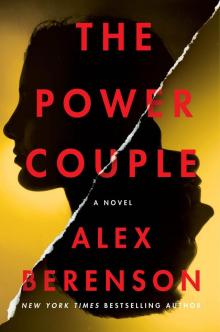 The Power Couple
The Power Couple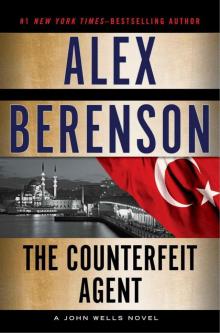 The Counterfeit Agent
The Counterfeit Agent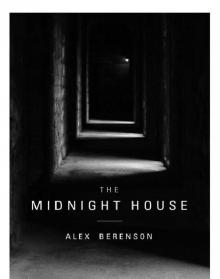 The Midnight House
The Midnight House The Prisoner
The Prisoner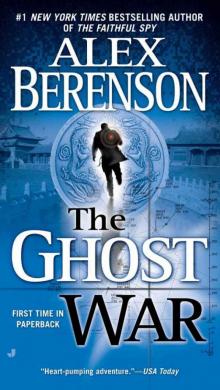 The Ghost War
The Ghost War The Shadow Patrol jw-6
The Shadow Patrol jw-6 The Shadow Patrol
The Shadow Patrol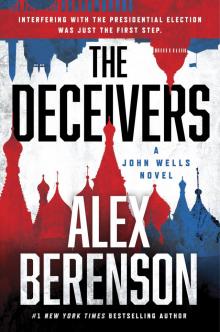 The Deceivers
The Deceivers The Night Ranger jw-7
The Night Ranger jw-7 The Faithful Spy
The Faithful Spy The Prince of Beers (Kindle Single)
The Prince of Beers (Kindle Single)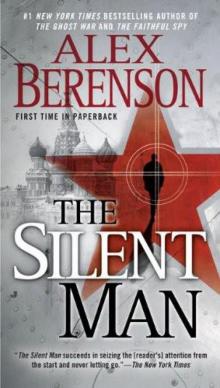 The Silent Man jw-3
The Silent Man jw-3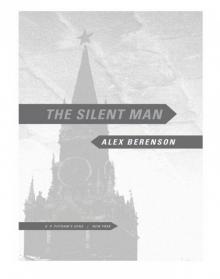 The Silent Man
The Silent Man The Wolves
The Wolves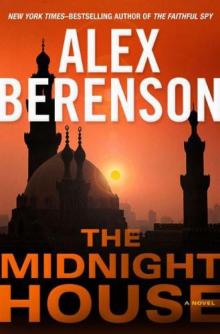 The Midnight House jw-4
The Midnight House jw-4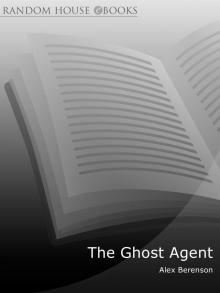 The Ghost Agent
The Ghost Agent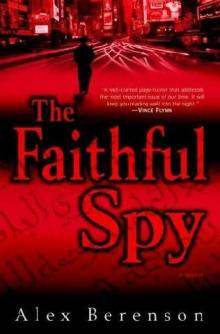 The Faithful Spy jw-1
The Faithful Spy jw-1 The Prince of Beers
The Prince of Beers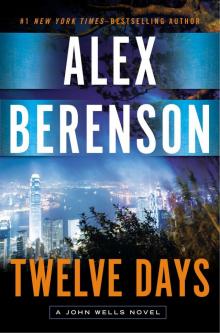 Twelve Days
Twelve Days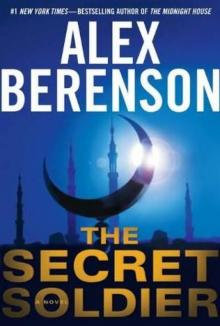 The Secret Soldier jw-5
The Secret Soldier jw-5 The Ghost War jw-2
The Ghost War jw-2 The Night Ranger
The Night Ranger